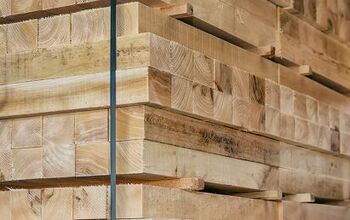How To Prevent Harvest Mites

Nobody wants to find harvest mites in their yard, and many people find them just as bad as ticks. After all, they both view people and animals as food in many ways, and they can cause a lot of discomfort. That’s why you’re not alone if you’ve ever wondered how to prevent harvest mites.
The best way to prevent harvest mites is to mow your lawn weekly between spring and early fall in most climates. It’s also important to regularly pull weeds and remove dense vegetation that may attract harvest mites to nest in your yard. Remove nesting areas for animals that harvest mites typically use as host animals, so they won’t linger.
You can also spray your yard with essential oils, like thyme and lavender, to prevent harvest mite infestations. Even planting aromatic herbs like mint and chamomile can help keep harvest mites out of your yard. Follow along as we explore how to prevent harvest mites, so you can enjoy spending time in your yard this summer.
How To Keep Harvest Mites Out Of Your Yard
There’s no ironclad way to prevent harvest mites if you live in an area where they’re abundant. However, you can take several steps to ensure you and your pets don’t get bitten by harvest mites. You can largely keep harvest mites out of your yard with a few simple steps, such as:
1. Plant Aromatic Plants
Many plants can repel harvest mites, and most of them are known for being quite aromatic. That includes lavender, mint, sagebrush, and many more. The main thing each of these plants has in common is that they all have strong scents and produce aromatic oils.
While we may love the smell of fresh mint, many pests, such as harvest mites, don’t agree. Catnip is another plant that can help keep harvest mites out of your yard. However, you must be careful with catnip, as you may wind up with stray cats in your yard.
You can’t go wrong with lemongrass, chamomile, or geraniums either. The bonus is that each of these harvest mite-repelling plants is also visually appealing. You can even use several of them, such as chamomile and mint, to brew homemade tea.
2. Regularly Mow Your Lawn
It’s easy to rest on your laurels and fall behind on mowing your lawn, especially in the dead heat of summer. However, doing so can welcome countless pests to your yard, such as ticks, snakes, mice, harvest mites, and more. Most people who suffer from harvest mite bites get them when they walk through tall, unkempt grass wearing short socks.
You must get ahead of the problem during the spring to ensure harvest mites don’t stick around throughout the summer. Ideally, you should mow the lawn once every 5 to 7 days during the spring to prevent harvest mites. Some people slow down and mow their lawns every 2 weeks during the summer, but doing so can cause problems.
Harvest mites and other pests may get too comfortable if they can enjoy a week without mowing. To avoid this problem, you must mow your lawn weekly until the fall. You can switch to bi-weekly mowing until the grass stops growing when it cools down.
3. Remove Weeds And Brush
Harvest mites love hiding, and that’s why the weeds and brush in your yard are problematic. Not only do weeds and dense brush look bad, but they also attract harvest mites. Overgrown vegetation attracts harvest mites looking to take cover, mate, and latch onto animals.
Regularly pull weeds and trim or remove the dense brush in and around your yard. Don’t neglect the brush at the edge of the tree line if you live near the woods. That’s especially true if you have outdoor dogs and cats, as your pets may wander toward the brush.
This can cause problems, as harvest mites often latch onto dogs and cats. Young harvest mites feed on dead skin cells and typically target small animals. Protect yourself and your pets by removing unnecessary, overgrown vegetation from your yard.
4. Discourage Animals From Nesting
Young harvest mites desperately wait to latch onto animals and use them as hosts. The more animals you have in the area, the more harvest mites you’ll have to deal with. Harvest mites will realize they have a steady food source and stay nearby.
You can largely reduce this problem if you make it harder for nearby wild animals to nest on your property. For example, you can remove dense piles of logs, fallen leaves, and rocks that may attract animals that would otherwise not nest in your yard without cover.
Remove bird feeders and fallen fruit if you grow fruit-bearing plants, which would attract animals. You must also close outdoor trash cans or move them into your garage to keep animals away. Young harvest mites won’t stick around your house if they don’t have many animals to latch onto.
5. Use Essential Oils
Like many pests, harvest mites are quite sensitive to strong odors. You can use that to your advantage and prevent harvest mites with essential oils. Essential oils like thyme, eucalyptus, clove, and tea tree can help keep harvest mites out of your yard.
The key is to dilute the essential oils to get the most out of them and cover more ground. Dilution also makes it easier to apply essential oils, especially with a spray bottle or pump sprayer. Some people also mix essential oils with witch hazel, as it’s the perfect carrier fluid.
Spray the essential oils around the perimeter of your yard and pay attention to areas with dense brush. You can even use a pump sprayer to cover your lawn after you mow it. However, you must only use pet-safe essential oils if you have outdoor pets. Some essential oils, like mint, can harm animals.
Are Harvest Mites Dangerous To Humans?
Harvest mites aren’t typically dangerous to humans, especially when compared to other notorious pests, like ticks, which can spread diseases, such as Lyme disease that harvest mites aren’t known for. However, harvest mites can bite you and your pets, and it can be painful.
Harvest mite bites are painful and itchy and can cause a rash. Luckily, you can use over-the-counter antihistamines and anti-itch creams to treat harvest mite bites. Be careful and try not to scratch the area around the bite, or you may worsen the rash.
It’s harder to treat dogs, as they can’t communicate, so you must be quite perceptive. Products like Seresto and Frontline can help relieve the pain and itchy sensation when your dog gets bitten by harvest mites. You can also treat your pets with medicated anti-itch shampoo to relieve itching and harvest mite rashes.
How To Prevent Harvest Mite Bites
The best way to prevent harvest mite bites is to prioritize yard maintenance, so they have nowhere to hide. However, you can also prevent bites if you wear long pants, long socks, and durable boots or high-top sneakers outdoors. That way, you can make it hard for harvest mites to access and bite your skin.
It’s also important to treat yourself with bug spray before you go into areas with harvest mites. Spray your ankles and legs, especially as that’s where they’re more likely to bite you. Otherwise, your best bet is to stay out of tall grass and overgrown vegetation if you know there are harvest mites nearby.
Take a shower when you come inside after a long day in your yard. That way, you can treat your skin before the rash sets in if you get bitten by harvest mites. Otherwise, the bite may be much worse if you cannot sanitize the area.
Summing It Up
The best way to keep harvest mites out of your yard is to remove overgrown vegetation, such as weeds and dense brush. You must also plant aromatic plants, like chamomile, lavender, and mint, which can help discourage harvest mites from hiding on your property. Mow your lawn weekly during the spring and summer to protect yourself and your pets from harvest mites until temperatures drop.
Related Guides:

Nick Durante is a professional writer with a primary focus on home improvement. When he is not writing about home improvement or taking on projects around the house, he likes to read and create art. He is always looking towards the newest trends in home improvement.
More by Nick Durante



























